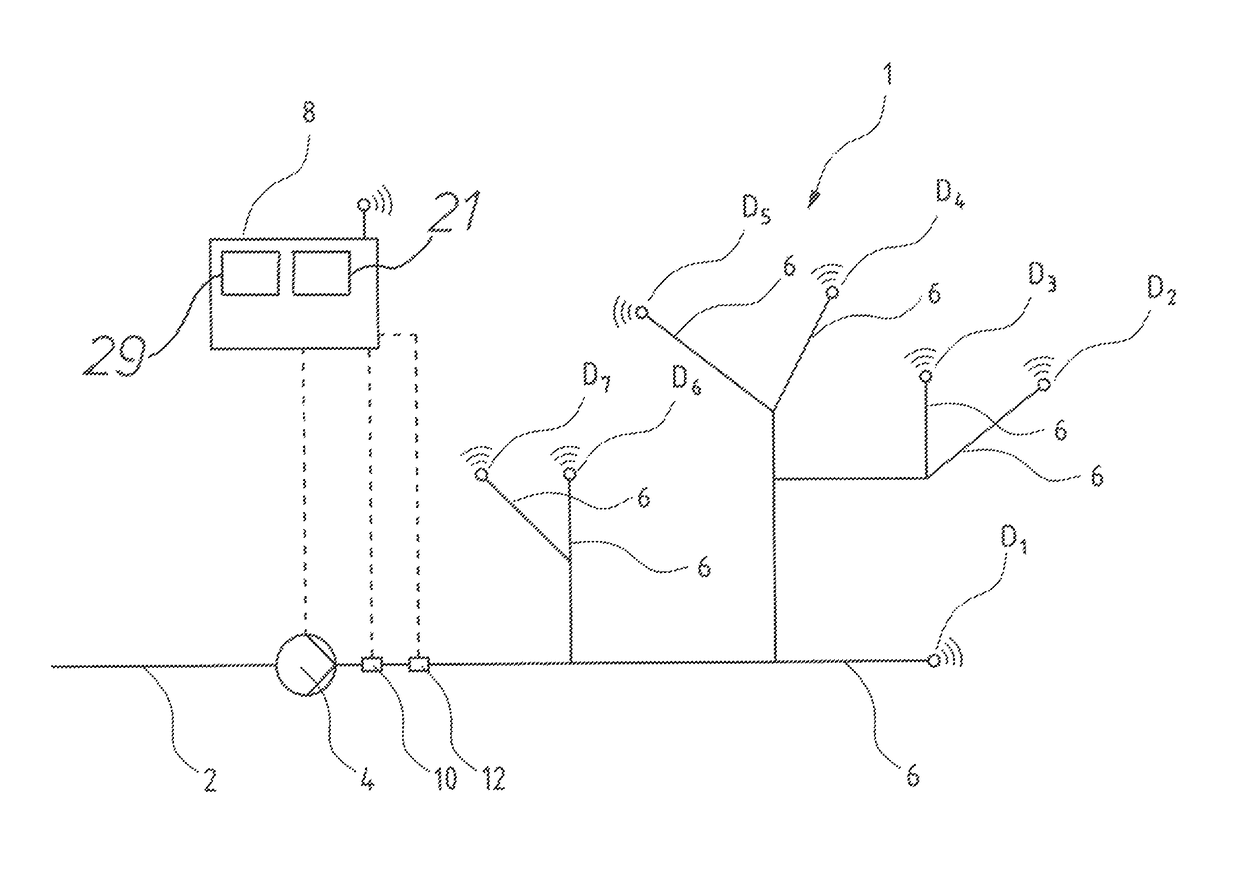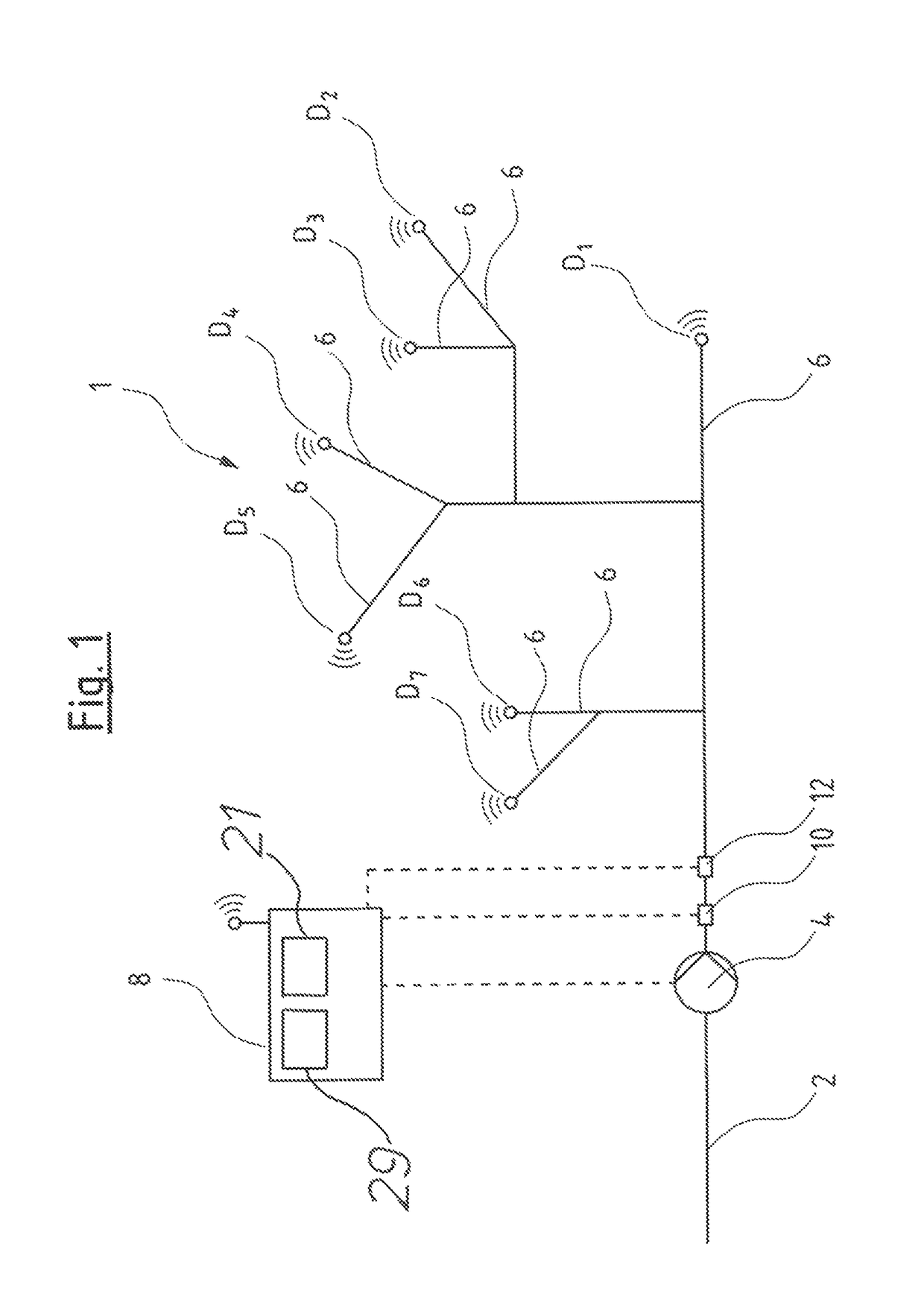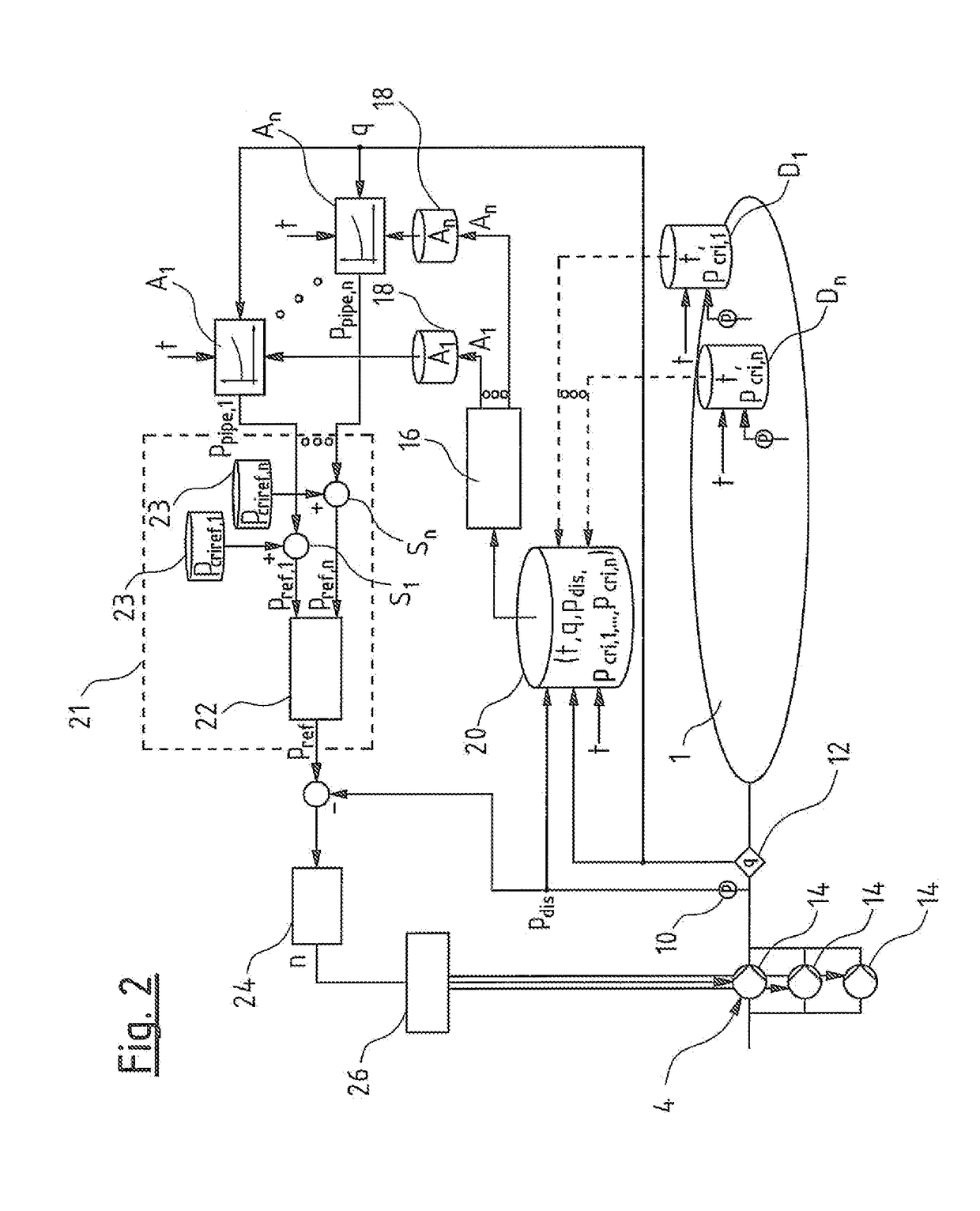Pump system
a technology of pump system and pump head, which is applied in the direction of water supply mains, water supply installation, fluid pressure control, etc., can solve the problem of difficulty in maintaining the desired minimum pressure in all parts of the water supply main, i.e., in all branches, and achieve the effect of greater accuracy of recognition
- Summary
- Abstract
- Description
- Claims
- Application Information
AI Technical Summary
Benefits of technology
Problems solved by technology
Method used
Image
Examples
Embodiment Construction
[0045]FIG. 1 schematically shows a water supply mains having a pump system according to an embodiment of the invention. The water supply mains comprises a feed conduit 2, in which a pump unit 4, for example one or more pump assemblies, is arranged. The water supply mains branches into several branches 6 downstream of the pump unit 4. Pressure sensor units D(D1 . . . Dn) are arranged in the shown individual branches 6 at critical points. In the example shown here, the pressure sensor units D are equipped with radio communication modules, which permit a data transmission, via a mobile network according to the SMS standard, to a control device 8. The pressure sensor units D moreover comprise measured value memories, in which pressure measured values with a time stamp and stored at different points in time are stored, so that the individual pressure measured values can be assigned to exact points in time at which they were acquired. The pressure sensor units D are designed such that the...
PUM
 Login to View More
Login to View More Abstract
Description
Claims
Application Information
 Login to View More
Login to View More - R&D
- Intellectual Property
- Life Sciences
- Materials
- Tech Scout
- Unparalleled Data Quality
- Higher Quality Content
- 60% Fewer Hallucinations
Browse by: Latest US Patents, China's latest patents, Technical Efficacy Thesaurus, Application Domain, Technology Topic, Popular Technical Reports.
© 2025 PatSnap. All rights reserved.Legal|Privacy policy|Modern Slavery Act Transparency Statement|Sitemap|About US| Contact US: help@patsnap.com



